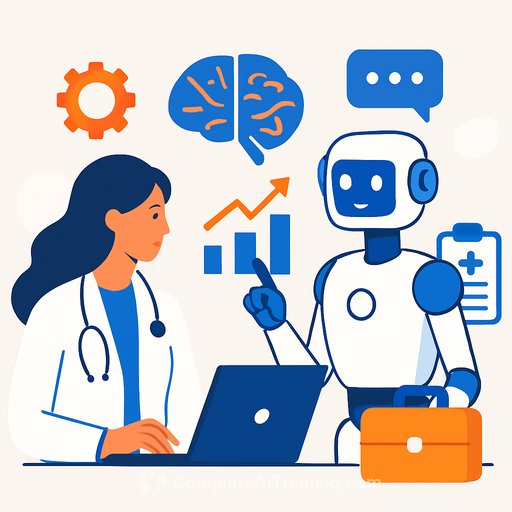Agentic AI in Healthcare: From Automation to Patient-Driven Care
Dr. Hassan Tetteh from the Johns Hopkins Center for Digital Health and AI highlights a clear shift: agentic AI could outpace human performance in specific tasks and change how healthcare work gets done. The upside is compelling-care that is more personal, proactive, and driven by patient goals.
The question is no longer "if," but "how" we implement this safely, ethically, and with measurable impact.
What "agentic AI" means in clinical settings
Agentic AI refers to systems that can plan, decide, and take actions to achieve a goal under defined constraints. Think of it as a digital colleague that can coordinate steps, follow policies, and escalate to humans when needed.
Used well, it can reduce admin load, surface the right information at the right time, and keep patients engaged between visits-without replacing clinical judgment.
High-impact use cases for care teams
- Care navigation: A 24/7 assistant that schedules, reschedules, handles pre-visit prep, and closes loops after discharge.
- Chronic condition support: Multi-step coaching for diabetes, CHF, COPD-monitoring signals, adjusting plans, and flagging risks to clinicians.
- Documentation and prior auth: Draft notes, summarize charts, pre-fill forms, and chase missing data with audit trails.
- Personalized care plans: Goals, barriers, literacy level, and social needs inform care steps and outreach cadence.
- Population health ops: Outreach campaigns that adapt by response, close gaps, and track outcomes automatically.
Risks and guardrails you need in place
- Clinical safety: Human-in-the-loop for diagnosis, treatment, and high-risk actions. Clear escalation and stop rules.
- Data protection: HIPAA-compliant workflows, minimum necessary PHI, de-identification where possible, and vendor BAAs.
- Transparency: Source citations, model/version logging, and traceable actions for audits.
- Bias and equity: Test across subgroups, monitor drift, and include community input for interventions.
- Regulatory readiness: Align with FDA expectations for AI/ML-enabled tools and document your change-control process.
For reference, see current thinking from the FDA on AI/ML-enabled medical devices and the WHO guidance on AI ethics and governance.
A practical 90-day plan
- Pick one workflow: High volume, high friction, low clinical risk (e.g., referral management or documentation support).
- Define success up front: Metrics for safety, time saved, patient responsiveness, and net cost per case.
- Choose the architecture: Clear data boundaries, role permissions, and an action policy that forces human review where needed.
- Prep the data: Standardize inputs (FHIR where possible), scrub identifiers as appropriate, and set up monitoring.
- Governance: Cross-functional review (clinical, compliance, security, IT, operations) with a simple decision log.
- Pilot and iterate: Start small, track errors, collect clinician/patient feedback, and adjust prompts, policies, and UI.
- Train the team: Short, role-specific sessions on what the agent does, what it doesn't do, and how to supervise it.
If your organization is building AI skills across clinical and operations teams, explore structured learning paths by role at Complete AI Training.
The bottom line
Agentic AI is set to change how healthcare work is executed and how patients participate in their care. The path forward is disciplined: start with clear use cases, put guardrails in place, measure outcomes, and keep humans in control where it counts.
This is less about hype and more about execution. Build the muscle now, one workflow at a time.
Your membership also unlocks:






